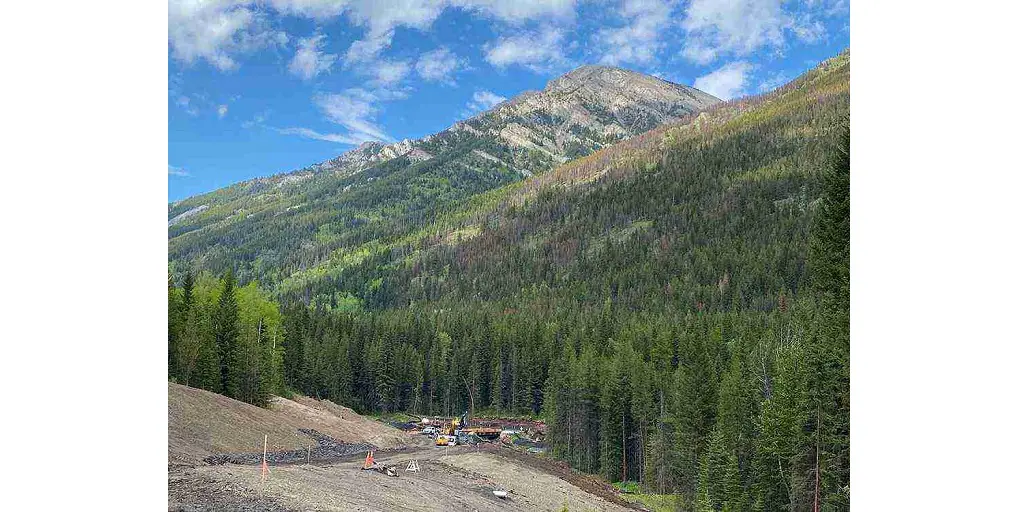If you're planning a land survey in West Kelowna, you may be wondering about the most efficient and advanced methods available. One such method gaining rapid popularity in the surveying industry is the use of LiDAR-equipped drones.
In this blog, we'll delve into how a LiDAR drone survey works, the types of LiDAR mapping drones, and what you can do with the valuable GIS data generated. Plus, we'll touch on how Core Geomatics can assist you in this cutting-edge field of surveying.
The Types of LiDAR Mapping Drones
LiDAR mapping drones come in two primary types: fixed-wing and quadcopter. The choice between them depends on the specific requirements of your survey. Fixed-wing drones resemble planes and are ideal for covering vast areas efficiently. They glide smoothly but may require more skilled navigation.
Quadcopter drones, on the other hand, operate like helicopters, offering greater maneuverability, making them suitable for surveys in challenging or confined spaces, such as beneath bridges or within caves.
LiDAR technology isn't limited to drones; it can also be integrated with planes and helicopters. However, these manned vehicles involve higher risks and more complex permitting processes. Planes may fly too fast and too high for high-resolution data, while helicopters may struggle with stability during intricate maneuvers, limiting their access to certain areas.
Performing a LiDAR Drone Survey
Conducting a LiDAR drone survey is a straightforward process. Depending on the survey area, you may need permits, but this is typically quicker and more cost-effective than using manned aerial vehicles. LiDAR-equipped drones are pre-configured for the task. One or more drones, depending on the survey's scale, fly over the area, capturing high-quality LiDAR images that can even penetrate through dense vegetation.
Professionals with expertise in drone surveying can quickly set up and execute the survey. Multiple drones might be deployed based on battery capacity. The LiDAR data collected is then exported directly to a Geographic Information System (GIS) for further analysis and visualization.
Corridor Mapping for a LiDAR Drone Survey
Corridor mapping is a key strategy employed in LiDAR drone surveys. Modern drones can be programmed to execute complex maneuvers with ease. For example, many drones have a “hover” mode that allows them to circle or remain stationary at a designated point in space.
While not as exciting as acrobatic flights, corridor mapping is highly efficient for covering extensive areas quickly. Fixed-wing drones excel in corridor mapping due to their plane-like operation and high-speed capabilities.
GIS Data for Aerial Mapping
After data collection, it's crucial to bring the information into a GIS platform. Most GIS data, whether from LiDAR or other sources, adheres to standardized formats. Within the GIS system, you can visualize the data as 3D points and manipulate it for various purposes, including planning new projects.
However, raw data often requires processing to ensure accuracy. Many companies rely on third-party GIS data management services. For a more streamlined experience, consider working with an all-in-one solution like Core Geomatics, which can reduce potential complications in your surveying project.
Simulating Topographic Data
A LiDAR survey is a rapid and accurate method for surveying various terrains. UAVs equipped with LiDAR technology provide precise data at high resolutions. This data can be used to simulate and store topographic information, which proves valuable for a wide range of applications, both now and in the future.
Finding The Right Land Surveyor
If you're considering using an unmanned aerial vehicle for your next LiDAR survey in West Kelowna, it's the perfect time to seek answers to your questions. Core Geomatics, a leading name in the field, can provide the expertise, equipment, and support you need to ensure a successful surveying project. Their experienced professionals and state-of-the-art technology can make your surveying endeavors more efficient and precise than ever before. Contact Core Geomatics today to explore the possibilities of LiDAR drone surveys for your specific needs.
For More Information about Geomatics Land Surveying and Alberta Land Surveyors Please Visit: CORE Geomatics.







